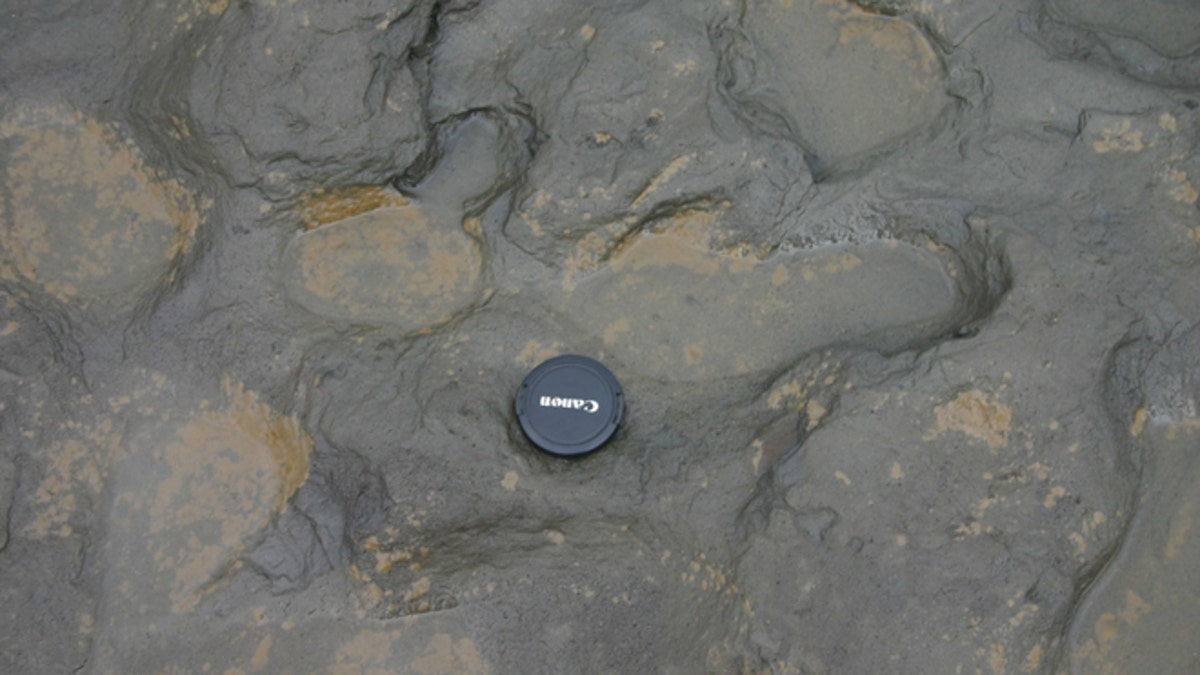
Feb. 7, 2014: Human footprints, thought to be more than 800,000 years old, found in silt on the beach at Happisburgh on the Norfolk coast of England, with a camera lens cap laid beside them to indicate scale. (AP Photo/British Museum)
LONDON – British scientists have discovered human footprints in England that are at least 800,000 years old -- the most ancient found outside Africa, and the earliest evidence of human life in northern Europe.
A team from the British Museum, the Natural History Museum and the University of London uncovered imprints from up to five individuals in ancient estuary mud at Happisburgh on the country's eastern coast.
British Museum archaeologist Nick Ashton said the find -- announced Friday and published in the journal PLOS ONE -- was "a tangible link to our earliest human relatives."
Preserved in layers of silt and sand for millennia before being exposed by the tide last year, the prints give a vivid glimpse of some of our most ancient ancestors. They are from a group, including at least two children and one adult male. They could be a family foraging on the banks of a river scientists think may be the ancient Thames, beside grasslands where bison, mammoth, hippos and rhinoceros roamed.
The researchers said the humans who left the footprints may have been related to Homo antecessor, or "pioneer man," whose fossilized remains have been found in Spain. That species died out about 800,000 years ago.
Ashton said the footprints are between 800,000 -- "as a conservative estimate" -- and 1 million years old, at least 100,000 years older than the previous earliest evidence of human habitation in Britain. That's significant because 700,000 years ago, Britain had a warm, Mediterranean-style climate. The earlier period was much colder, similar to modern-day Scandinavia.
Natural History Museum archaeologist Chris Stringer, who is part of the project, said that 800,000 or 900,000 years ago Britain was "the edge of the inhabited world."
"This makes us rethink our feelings about the capacity of these early people, that they were coping with conditions somewhat colder than the present day," he said.
"Maybe they had cultural adaptations to the cold we hadn't even thought were possible 900,000 years ago. Did they wear clothing? Did they make shelters, windbreaks and so on? Could they have they have the use of fire that far back?" he asked.
The footprint find will form part of an exhibition, "Britain: One Million Years of the Human Story," opening at the Natural History Museum in London next week.
